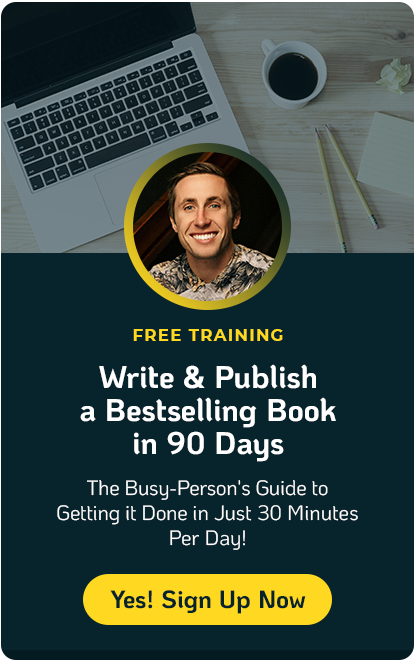Perhaps you have an idea, even a good idea, but are you getting the results you really want?
If you’re reading this, then you know there’s room for improvement.
There’s always room for improvement.
As you keep reading, you’ll come across both old and new concepts, but this isn’t about whether or not you know what’s in this article.
This is about how well you apply it to your writing.
So many people seek novelty, but they do not use what they learn, which means their writing stagnates.
If you’re ready to really use what you learn here, keep reading.
1. Your Ideal Reader
Who are you writing for?
You can’t please everybody, so don’t even try.
Imagine sitting across from your ideal reader and having a cup of tea. Answer their questions, anticipate their worries, and write only for them.
Exclude the people that aren’t right for your writing.
When people read your article, you want them to think, “Hey! This is written for me!”
Example: When I write, I keep one person in mind. Sometimes that’s a client of mine who asked me a question, and sometimes it’s an imaginary person who holds several characteristics that I particularly enjoy in my readers and customers
2. Address a Deep Need
What is your ideal reader struggling with?
What is a pain point, problem or deep need that you can address in your article?
Our brains are drawn to problems. Write an article about how to be healthy and I could care less. But write about The 7 Foods That Make Me Fat, Lethargic and Sick, and you’ve got me interested.
What do your readers want?
What problems are keeping them from achieving their goals?
What’s keeping them up at night?
Dig deep and you’ll find gold.
Example: 21 Warning Signs You Chose the Wrong Topic for Your Blog – A great post by Jon Morrow, which addresses a big problem, namely people who blog but aren’t getting results.
3. Headline
In order to draw people in, you have to write a headline that pops.
Look at some of the most popular posts at big blogs. Take a peek at magazines like Cosmo, and you’ll see great headlines.
There’s a formula for writing headlines.
The same ones are used over and over again for a reason.
Use them, make them your own, and your inbox will be full of praise from enthusiastic readers.
Example: 10 Simple Ways to Double the Speed of Your Writing … Right Now – This is a post I wrote for Write to Done. It has a powerful headline with a clear promise: learn to write faster and get more done, right now.
4. Opening
You need to have a strong opening that keeps your readers attention.
Have you ever noticed how some fiction books jump straight into the action without any introduction whatsoever?
It grabs your attention right away. You can’t put the book down.
You can do the same with your articles. Jump right into a story with some drama and keep people hooked until the end.
Example: The Snowboard, the Subdural Hematoma, and the Secret of Life – A fantastic post by Brian Clark that opens with this: “The massive pool of blood in my head pressed precariously against my brain. The doctors marveled that I was alive, much less walking and talking.”
Powerful stuff.
5. Ending
And once your article ends, you have to be clear about what you want your reader to do.
Do you want them to share your article, sign up to your newsletter, or simply use what they’ve just learned?
Your article needs to have a goal.
You have to direct people toward that goal, because if you don’t, they’ll click away to another article and forget about yours.
Example: 25 Questions That Will Help You Find and Follow Your Passion – This is one of my most popular posts, and each question is a call to action, but in the end, I stress the fact that I want people to use the questions in the post, because if they don’t, they choose to stay stuck.
6. Write from the Heart
Perhaps the most powerful tip of all is to write from your heart.
Relax when you write and say what you feel compelled to say.
Let go of what people will think, how well you measure up to other writers, and whatever worries may have been floating in your mind.
Authenticity comes from expressing what YOU feel, not from trying to impress people.
Be honest.
Be bold.
Be you.
Not always easy, but always worth it.
Example: How to Suck at Launching a Product – A deep and heartfelt post from Adam Baker, where he goes through one of his not so successful product launches. He shares it all.
7. Simplify
Last, but not least, go through your article multiple times and cut out the fluff.
Write your first draft, sleep on it, rewrite, sleep, and rewrite.
I’ve found that the more I rewrite and polish, the better my articles get. They’re like fine wine, although I don’t drink wine.
Your writing should be simple, powerful and fluff-free.
Each sentence should have a purpose and transmit a message.
Example: It’s Time To Write That Book You’ve Always Wanted To Write – Jeff Goins writes simple, to-the-point articles better than most, and in this post he demonstrates that longer isn’t always better.
How to Apply This to Your Writing
Whatever you do, don’t just go on to the next article after reading this.
In order to improve your writing and improve the results you get, you have to implement what you learn.
And to do that, pick one of the 7 points above and apply it to your writing.
If you feel particularly frisky, take one point each day of this week and use it.
Your writing will improve, guaranteed.
A guest post by Henri Junttila, the founder of Wake Up Cloud, and if you’re interested in taking your writing skills further, he’s currently running a free e-course on Writing for the Web, where you’ll learn more about the strategies he uses to mesmerize and delight his readers.
















